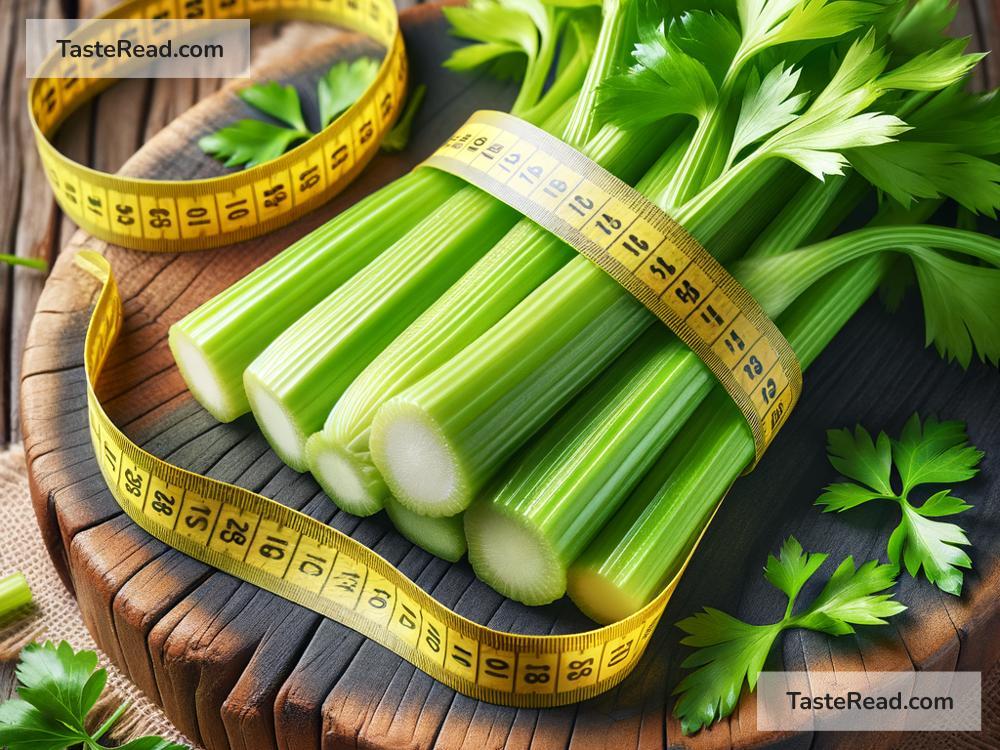Why Celery Is Praised for Its Low-Calorie Count
Celery is one of those foods that seems to have a permanent spot in the health and diet world. It’s crunchy, refreshing, and highly versatile—you can dip it, chop it, juice it, or snack on it whole. But the thing that really makes celery stand out is its reputation for having an incredibly low calorie count. In fact, you may have heard the popular claim that eating celery burns more calories than it provides, thanks to the energy required to chew and digest it. While this idea, often called the “negative-calorie food myth,” isn’t entirely accurate, celery does deserve the praise it gets for being one of the most calorie-friendly foods you can eat.
So, why exactly is celery so celebrated for being so low in calories? Let’s break it down in simple terms.
1. Celery Is Mostly Water
One reason celery is so low-calorie is that it’s mostly water—about 95% of it, to be exact! Water, of course, has zero calories, which means most of the weight of celery doesn’t contribute to your calorie intake. Essentially, when you bite into a stalk of celery, what you’re mostly consuming is water along with a little fiber and nutrients. Because celery is so hydrating, it’s also a popular choice to snack on during hot days or after exercise. You get a satisfying crunch and a bit of hydration all at once.
2. It’s Light on Carbs
Carbohydrates are one of the main sources of calories in most foods. While fruits like apples and bananas have more natural sugars (which contribute calories), celery is unlikely to raise your carb count significantly. One medium stalk of celery contains less than 2 grams of carbohydrates and close to zero sugar. This makes celery a favorite among people who are on low-carb diets or watching their blood sugar levels.
3. It’s Packed with Fiber (but Not Calories)
Despite being very low-calorie, celery is far from “empty” or boring. It’s actually packed with dietary fiber, which helps keep your digestive system healthy. Fiber is important because it makes you feel full and satisfied, even if the food itself doesn’t provide many calories. This is why celery is a great option for people trying to lose weight or avoid overeating. Eating a stalk of celery can make you feel like you’ve had a crunchy snack without loading up on calories.
4. How Many Calories Does Celery Actually Have?
A typical stalk of celery contains only about 6 to 10 calories—that’s it! Compare that to a candy bar, which can easily pack hundreds of calories, and it’s clear why celery is such a popular snack choice for dieters. You could eat multiple stalks of celery and still not come close to making a dent in your daily calorie allotment.
Many people even use celery as a “vehicle” for calorie-rich dips, such as peanut butter or ranch dressing, because the celery itself hardly adds any calories. Even though the dips might not be low-calorie, celery helps balance things out.
5. Does Celery Burn Calories?
Now let’s talk about the “negative-calorie food” myth, which has popularized the idea that celery requires more calories to chew, swallow, and digest than it provides. While the logic sounds fun, science doesn’t completely agree. Yes, you do burn calories when your body digests and metabolizes food, a process called the “thermic effect of food.” However, the amount of calories burned from digesting celery is very small—not enough to outweigh the calories it contains.
Even though celery isn’t truly a negative-calorie food, the number of calories it contributes is so minimal that it might as well feel that way!
6. Nutrition Without the Guilt
Low-calorie foods often get criticized for being “bad-tasting” or lacking nutrients, but celery proves that stereotype wrong. For such a light food, celery packs some important vitamins and minerals to keep your body healthy. It’s a great source of:
- Vitamin K (important for bone health and blood clotting)
- Vitamin A (supports eye health and your immune system)
- Vitamin C (boosts your immune system and promotes healthy skin)
- Potassium (helps regulate blood pressure and muscle function)
So even though celery doesn’t have many calories, it’s far from being a nutritionally “empty” food. It offers a lot of goodness without the guilt of high calorie counts.
7. How to Incorporate Celery Into Your Diet
Another reason celery is popular is its versatility. You can easily toss celery into salads, soups, or stir-fries for added crunch and flavor. It also pairs beautifully with foods like hummus, cream cheese, or almond butter. Some people even juice celery for a refreshing drink that delivers vitamins in liquid form.
Celery is also easy to store and very affordable, making it accessible for almost everyone. Whether you’re on a tight budget or trying to eat healthier, celery is a great staple to keep in your fridge.
Conclusion
Celery’s low-calorie count is undeniably one of its biggest selling points, but there’s so much more to this humble vegetable. It’s hydrating, rich in fiber, and packed with important vitamins and minerals. Whether you’re trying to lose weight, maintain a healthy lifestyle, or just looking for a crunchy snack, celery is a smart and satisfying choice. So go ahead—grab a stalk of celery, dip it in your favorite spread, and enjoy all the benefits this amazing veggie has to offer.


